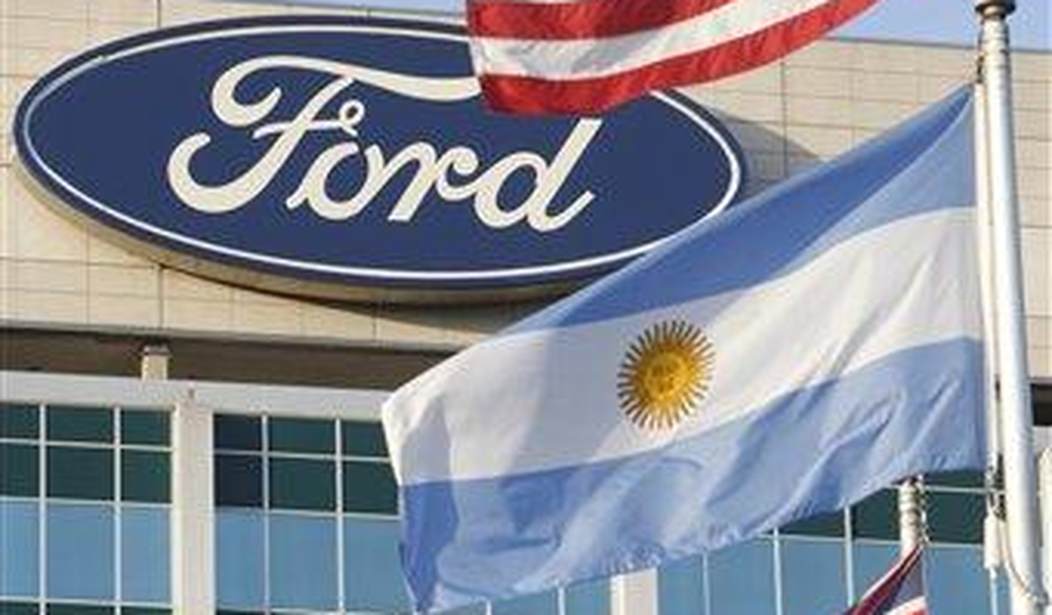There was an escalation this week in the battle between the UAW and Ford. It started Wednesday when the UAW announced it was extending the strike to include a Ford truck building plant in Kentucky. Previously, the UAW had only expanded the strike during Friday announcements around noon. So what happened this week? Things changed after Ford submitted an offer to the UAW that was essentially the same as the previous one.
Fain said that for two weeks, Ford told the UAW there was more money to negotiate with, but on Wednesday, the company offered the UAW the same contract it had previously offered with no additional financial incentives.
“Our members’ lives, and my handshake, are worth more than that. You just cost yourself Kentucky Truck Plant,” Fain said in regard to his response to Ford.Within an hour of that call, Dunn had been notified and then walked out his roughly 9,000 members at KTP…
“Ford thought they could sit back and not make further progress in bargaining because they had the best offer on the table … they stopped being interested in reaching a fair deal … so we changed the rules,” Fain said.
The Kentucky Truck Plant is one of Ford’s more profitable ones and the company is expected to lose about $30 million per day it remains closed. Previously, the UAW had called for strikes at Ford factories involving passenger cars which are not the biggest moneymakers for Ford. Trucks are the most profitable part of their business, making this a big escalation.
As for Ford, yesterday they announced a reason why their latest offer hadn’t gone up. They say they are at the limit of what they can offer and still allow the company to grow.
Kumar Galhotra, president of the company’s traditional operations, said that while the company is willing to shuffle money around within the existing offer to meet the union’s priorities, any added costs would hurt the automaker’s ability to operate in the future and invest in emerging areas such as electric vehicles.
“We’ve been very clear that we are at the limit. We stretched to get to this point,” Galhotra said Thursday during a media and analyst call. “Going further will hurt our ability to invest in the business like we need to invest.”
So what is the latest Ford offer that the UAW has decided to shun as insufficient. According to the Washington Post it starts with a 23% raise over the next 4 years:
Ford’s latest offer would raise wages for full-timers by 23 percent over the life of the contract. It also meets a key UAW demand by restoring the regular cost-of-living adjustments to wages that UAW workers lost in 2009.
Ford would also eliminate the tiered system of wages, putting everyone on one pay scale. It has agreed to convert all temporary workers with at least 90 days of service to permanent status after the new contract is ratified. For new temporary workers in the future, Ford would raise the starting wage to $21 an hour and provide profit-sharing payments. The company also granted the union the right to strike over any plant closures during the life of the contract.
Ford also offered to boost its payments to 401(k) retirement accounts by making a 6.4 percent contribution of all hours worked, including overtime. In addition, it would contribute $1 for each hour worked to help fund the worker’s health-care expenses in retirement.
Ford has not agreed to restore defined-benefit pensions and company-financed health care in retirement for all workers. Ford says it is also opposed to a UAW demand to guarantee that future battery factories will offer the same pay and benefits as existing factories.
It’s a significant raise though not the 40% the union wanted or the 36% they later said they would settle for.
The defined-benefit pension demand was never serious. No one thinks that kind of pension is coming back. The other demand not mentioned here is a 32-hour work week. That was also something I think the union threw in just so it could compromise by removing it later.
One outstanding bone of contention involves future battery factories. The UAW is rightly concerned about what happens to them as the industry moves toward more electric cars. Electric cars have a lot fewer parts and required fewer people to put them together. So the UAW is trying to get its foot in the door on battery plants.
The problem is that Ford has been losing fistfuls of money on electric cars already. They simply can’t afford to raise the price of building them if they want to have any hope of breaking even in the next few years. Q3 numbers for EV sales are just out this week and they are growing fast in the US:
Electric vehicle (EV) sales volumes set another record in Q3, as total sales of battery-powered vehicles jumped past 300,000 for the first time in the U.S. market. Year-to-date EV sales through September reached just over 873,000, putting the market firmly on track to surpass 1 million for the first time ever. The milestone will likely be achieved in November.
Total EV sales in Q3, according to an estimate from Kelley Blue Book, hit 313,086, a 49.8% increase from the same period one year ago and an increase from the 298,039 sold in Q2. Most automakers posted sizeable gains over 2022, with Volvo, Nissan, Mercedes and Hyundai delivering increases above 200%, thanks mostly to new products entering the market…
Electric vehicle sales accounted for 7.9% of total industry sales in Q3, a record and up from 6.1% a year ago and 7.2% in Q2.
So, there will be more than a million EV sales this calendar year and growth of 50% over last year. This trend is going to continue and the automakers know it. They need to move toward profitability in this sector if they want to survive.
Anyway, we’ll have to wait and see what happens now that the union has gone after the core of Ford’s business. If Ford is really at the limit then there won’t be much more they can offer. The UAW can keep the heat on but they’re just hurting the company they depend on at a certain point. It will be interesting to see who moves first.








Join the conversation as a VIP Member